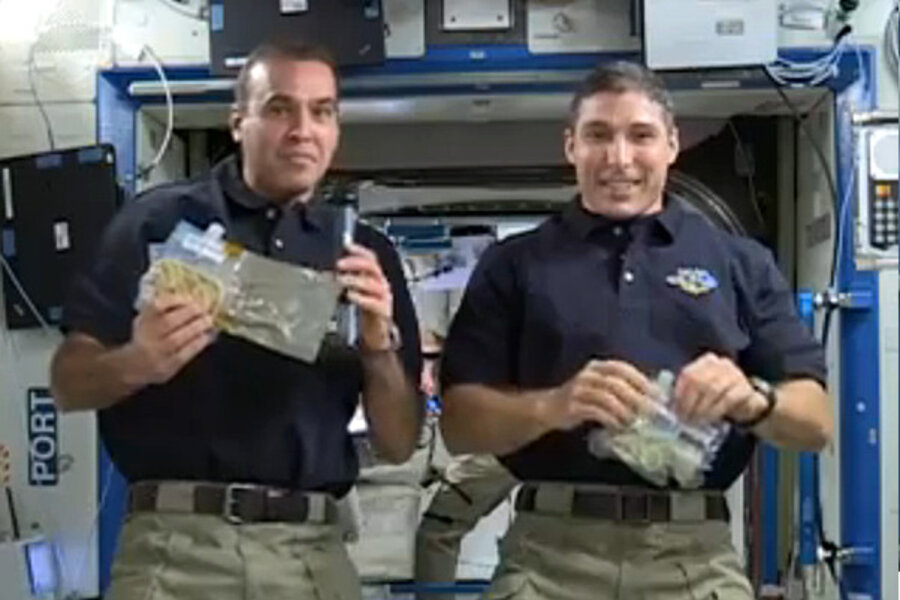Cooking a turkey? Not exactly. How astronauts eat Thanksgiving dinner.
Loading...
Cooking Thanksgiving dinner is tough enough when you don't have to worry about the turkey floating away. For the astronauts on the International Space Station, it's hard to approximate a traditional holiday dinner when they're 260 miles above their loved ones.
"If we can't be at home with our families during the holidays, then this is the next best place that any of us would like to be," says NASA astronaut Rick Mastracchio,.
"Though we miss our families, it's great to be in space," agrees Mike Hopkins, the other NASA astronaut currently orbiting with the international crew. "Opportunities to fly in space are rare, so we have to take advantage of them whenever they occur."
"The six of us up here are like a family," says Mr. Mastracchio, who is on his fourth visit to space. "Even though Thanksgiving is a work day here on the Space Station, we do plan on enjoying a big meal after work is done."
Their menu puts a space-food twist on traditional holiday foods. Imagine sitting down to a hearty meal of irradiated smoked turkey, thermostabilized yams, and freeze-dried baked beans, asparagus, and green beans.
"Green bean casserole is one of my favorites, but this is dehydrated, and we kind of have to mix it together as we eat it," explained Col. Hopkins via video last week, showing off the vacuum-sealed pack that the food comes in. To reconstitute the beans, the astronauts must squirt warm water into the pack and then massage the water into the freeze-dried green beans until they're ready to eat.
The six-person crew are also enjoying NASA's cornbread dressing, home-style potatoes, cranberries, and cherry-blueberry cobbler, most of which is similarly freeze-dried.
The bread, at least, just has to be heated up in the space station's oven, noted Hopkins.
Mastracchio and Hopkins are celebrating the uniquely American holiday with their Expedition 38 colleagues: Oleg Kotov, Mikhail Tyurin, and Sergey Ryazanskiy of the Russian Federal Space Agency, and Koichi Wakata of the Japan Aerospace Exploration Agency. The six men are conducting about 200 research experiments and scientific investigations aboard the orbiting laboratory.
The two NASA astronauts finished their Thanksgiving message with words of gratitude: "We're all very grateful to be here, and grateful for the ground team that supports us during the holidays. We're grateful to the men and women in the military, especially to those who are also away from their families because they're on deployment," said Hopkins.
Mastracchio added, "From the international space station, orbiting 260 miles above the earth, we wish everyone a Happy Thanksgiving!"







